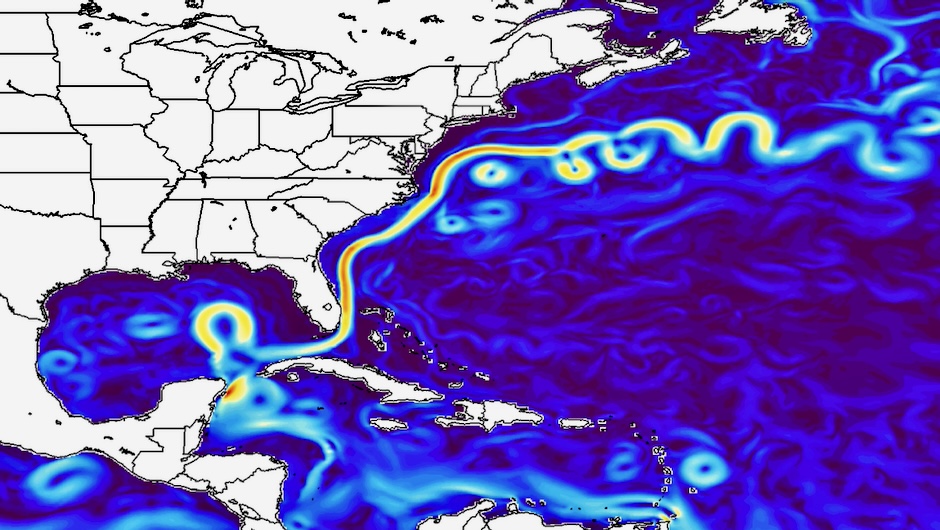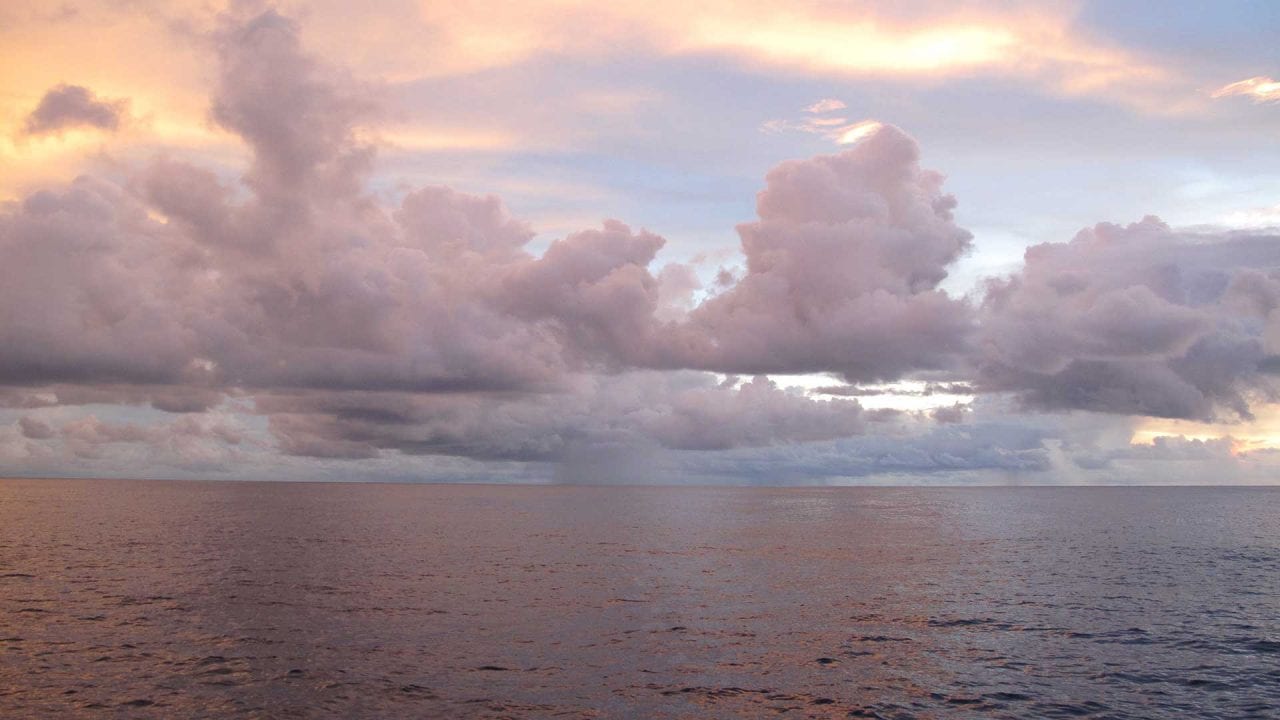FAU’s Southeast National Marine Renewable Energy Center (SNMREC) has received an $800,000 grant from the U.S. Department of Energy to advance ocean energy technologies. Collaborating with various experts and organizations, SNMREC will conduct a pioneering feasibility study for an ocean current test facility off Palm Beach County, marking a first in leveraging top marine energy expertise. The project’s end goal is to improve the nation’s competitiveness in marine energy technology, encourage domestic manufacturing, and create jobs while helping to achieve the nation’s energy goals.
Tag: Gulf Stream

One of the world’s fastest ocean currents is remarkably stable, study finds
New study challenges previous assertions of Gulf Stream slowdown
New Study Finds That the Gulf Stream is Warming and Shifting Closer to Shore
The Gulf Stream is intrinsic to the global climate system, bringing warm waters from the Caribbean up the East Coast of the United States. As it flows along the coast and then across the Atlantic Ocean, this powerful ocean current influences weather patterns and storms, and it carries heat from the tropics to higher latitudes as part of the Atlantic Meridional Overturning Circulation.
A new study published today in Nature Climate Change now documents that over the past 20 years, the Gulf Stream has warmed faster than the global ocean as a whole and has shifted towards the coast. The study, led by Robert Todd, a physical oceanographer at the Woods Hole Oceanographic Institution (WHOI), relies on over 25,000 temperature and salinity profiles collected between 2001 and 2023.

New Study Definitively Confirms Gulf Stream Weakening, Understanding the Changes Could Help Predict Future Trends in Extreme Events
The Gulf Stream transport of water through the Florida Strait has slowed by 4% over the past four decades, with a 99% certainty that this weakening is more than expected from random chance, according to a new study.
Mid-depth waters off the United States East Coast are getting saltier
A new study led by Woods Hole Oceanographic Institution (WHOI) shows a significant increase in frequency of warm saltwater intrusions from the deep ocean to the continental shelf along the Middle Atlantic Bight, which extends from the Gulf of Maine to Cape Hatteras, North Carolina. Using data collected from NOAA’s National Marine Fisheries Service Ecosystem Monitoring program, as well as data collected from the fishing industry, the study’s results show that ocean exchange processes have greatly changed over the past 20 years in this region.
Papers Explore Massive Plankton Blooms with Very Different Ecosystem Impacts
Two new papers explore this question and provide examples of conditions that lead to massive plankton blooms with vastly different potential impacts on the ecosystem, according to McGillicuddy, co-author of both papers. Both papers also point to importance of using advanced technology—including Video Plankton Recorders, autonomous underwater vehicles, and the Ocean Observatories Initiative’s Coastal Pioneer Array—to find and monitor these blooms.

Florida Current is Weaker Now Than at Any Point in the Past Century
A key component of the Gulf Stream has markedly slowed over the past century—that’s the conclusion of a new research paper in Nature Communications published on August 7.